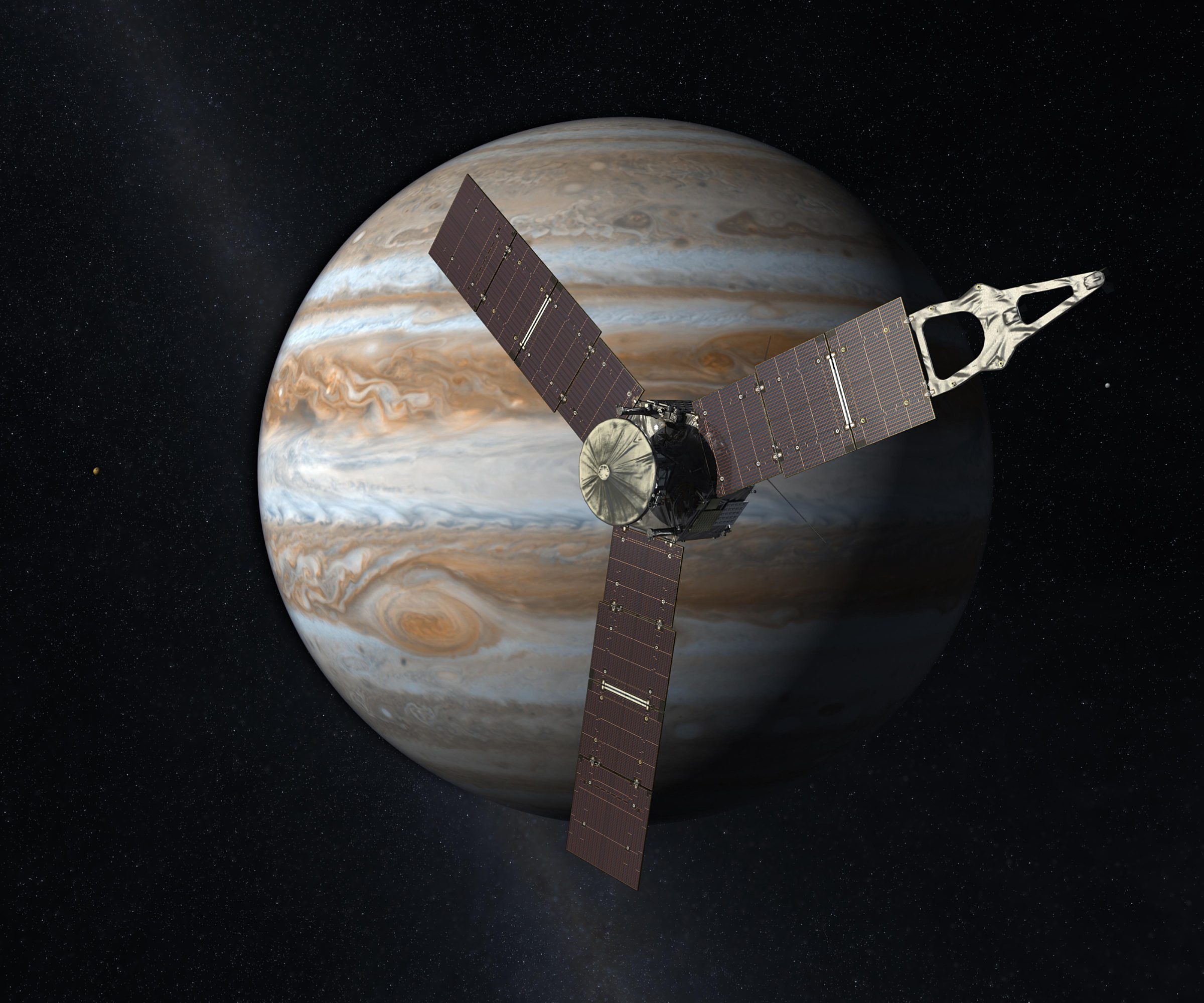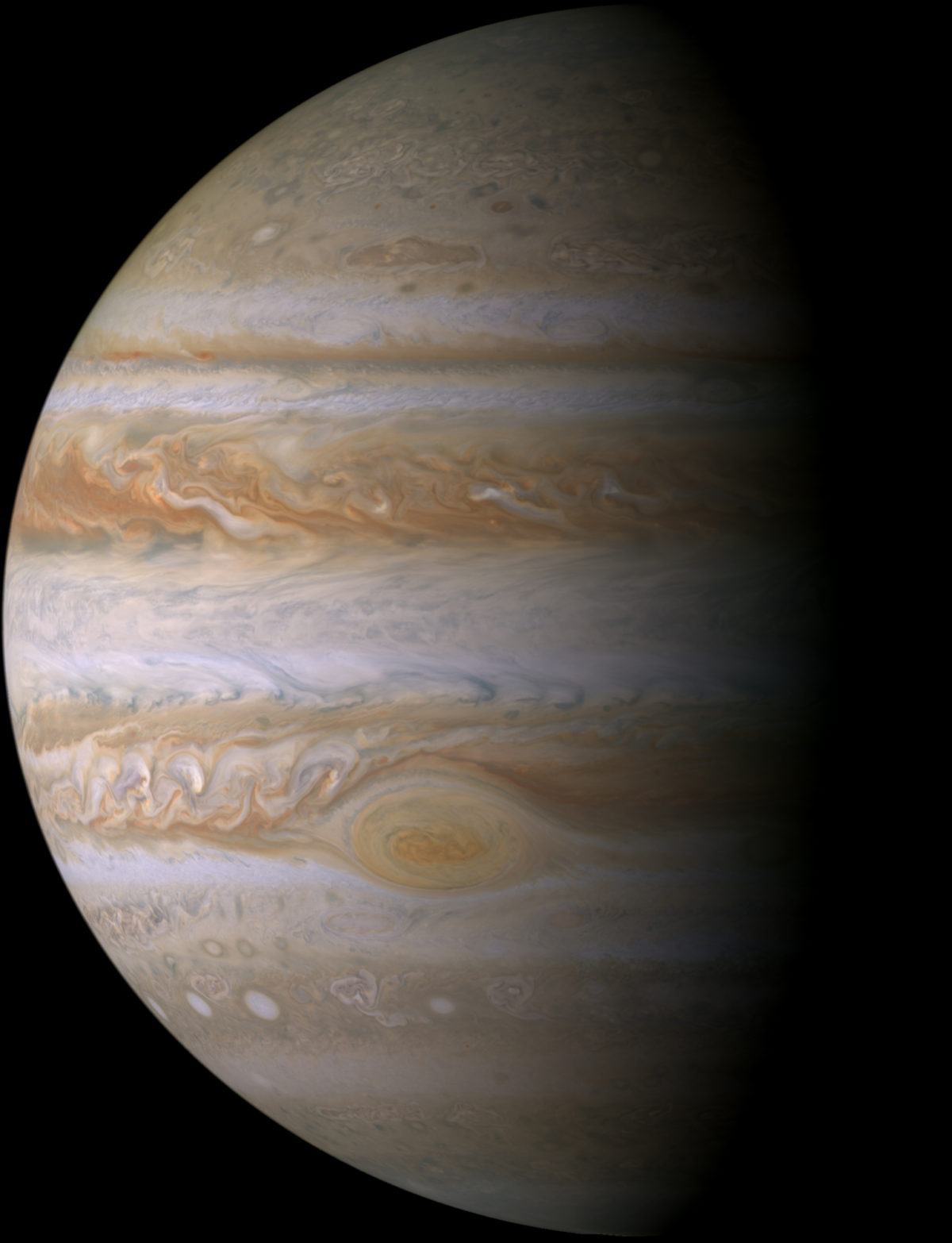Emily Lakdawalla • Jan 04, 2011
Juno in an alternate universe
I was browsing JPL's Planetary Photojournal today and noticed that they've posted an updated artist's concept of the Juno spacecraft, which is set to launch in August for a 2016 arrival at Jupiter:

I've been using an artist's concept from 2005 for Juno, and this one is much better. The spacecraft and simulated Jupiter look great; they even got Io and one of the icy moons (Europa or Ganymede, it's hard to tell) in the view. I don't like the way the Milky Way seems to sprout out of Jupiter's south pole though; it looks like Jupiter stole Enceladus' south polar geysers (and made them Jupiter-sized)!
However, there's one thing that's just weird. I was looking up other artist's concepts and realized that this new one has just minor updates to an artist's concept they showed in 2009. The most obvious difference between the two images, in fact, is that the new one is mirrored relative to the old one. Here's the 2009 concept:
Why is this weird? Jupiter still looks like Jupiter, right? It does, but it's an alternate universe Jupiter. Take a look at the Great Red Spot in both images. The Great Red Spot is the largest anticyclone in the solar system; Jupiter's oval-shaped storms are usually anticyclonic as opposed to cyclonic hurricanes on Earth. Now, I will freely admit that I cannot tell you this without having had to go and look it up, but anticyclones rotate clockwise in the northern hemisphere and anticlockwise in the southern hemisphere. In the most recent artist's concept of Juno, in which Jupiter has been mirrored, you can see that the Red Spot appears to have a clockwise sense of rotation, and is therefore a cyclone rather than an anticyclone. Also, the turbulent area of white clouds that sometimes appears to the west of the Red Spot (it was there for the Voyagers but not for New Horizons) appears to the east of the Red Spot in the 2011 Juno artist's concept. You can also compare the simulated view to the Cassini map of Jupiter -- which is the spacecraft that captured the specific view of Jupiter that they used to make the simulated view -- and see that the 2011 one is backwards:

This is a nit-picky thing, and I wouldn't even have noticed the mirror-reversal of the 2011 image if it hadn't been the right way around in the 2009 one that I was comparing it to, and I had to check with someone (thanks, Gordan) to confirm which one was backwards. Really I think the 2011 artist's concept looks terrific; I mostly wanted to make the point that it matters when you mirror-reverse space images!
The Time is Now.
As a Planetary Defender, you’re part of our mission to decrease the risk of Earth being hit by an asteroid or comet.
Donate Today

 Explore Worlds
Explore Worlds Find Life
Find Life Defend Earth
Defend Earth


![Juno [DEPRECATED]](https://planetary.s3.amazonaws.com/web/assets/pictures/_2400x2000_crop_center-center_82_line/juno_art_at-jupiter.jpg)